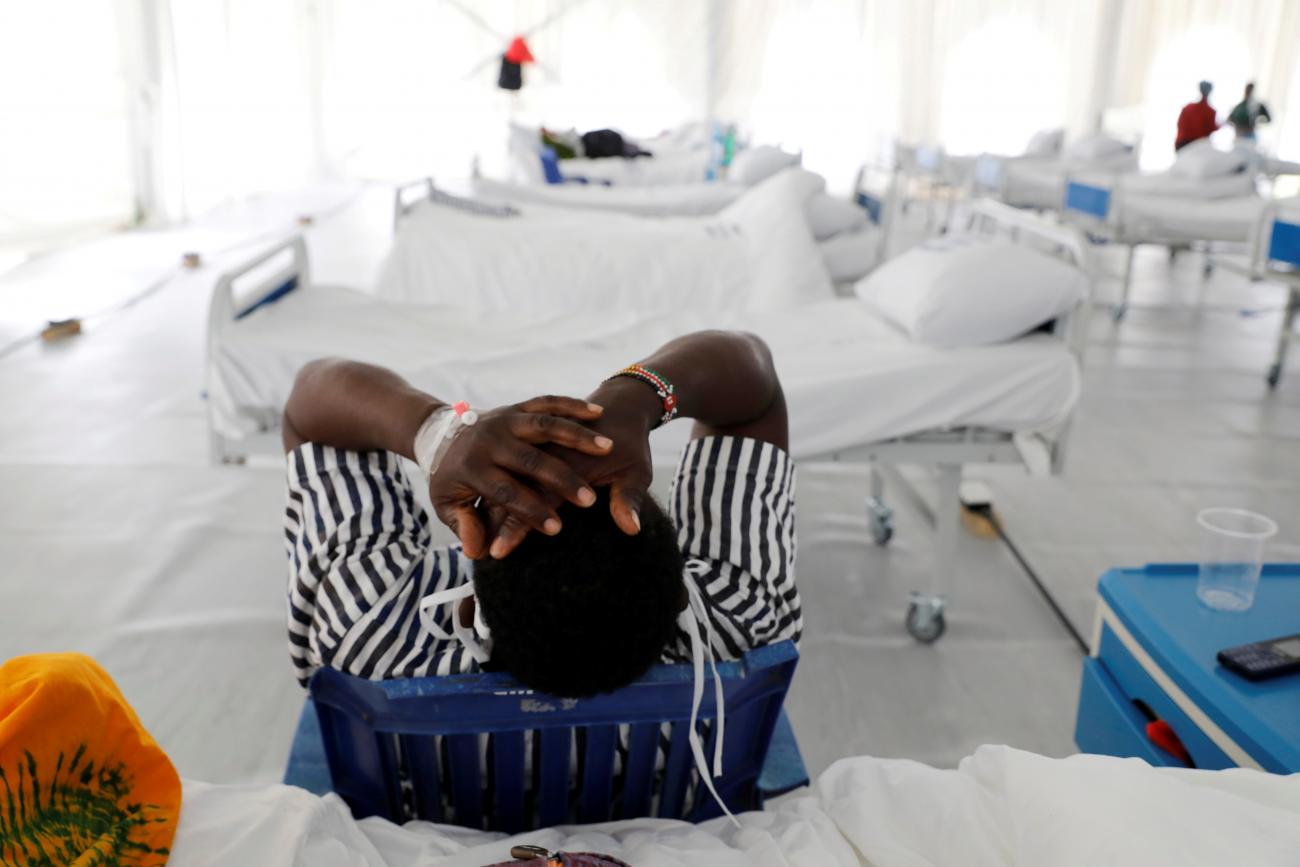On December 1, 2021, the World Health Assembly adopted a resolution establishing an Intergovernmental Negotiating Body (INB) to determine the content and form of a new pandemic agreement. Consultations over the course of the first half of 2022 have given rise to questions from member states as to the content and form of a new "instrument"—or agreement. During the INB's first public hearings, there were different views expressed in terms of the overall future governance mechanism of a new international instrument. Some participants advocated for the instrument to be nonbinding and advisory in nature and for individual countries to be able to implement their own policies in order to respect national sovereignty. Other speakers stressed that nationalism should be prevented, and that steps should be taken to monitor and enforce national compliance according to the international instrument.
A new pandemic agreement will require a balance between international compliance and respecting national sovereignty
Next week, the INB intends to identify "the provision of the Constitution of the World Health Organization (WHO) under which the instrument should be adopted," which includes Article 19 (conventions), Article 21 (regulations), and Article 23 (recommendations). To do this, it will need to grapple with how the principle of national sovereignty, and the accompanying principle of non-interference, will be addressed with respect to the agreement's content and form, including obligations to share data, resources, and personnel, and to relinquish control over certain aspects of national coordination and response. The INB will have to find a balanced path that contains meaningful norms and compliance, while still respecting national sovereignty.
To provide technical assistance to the WHO, INB, and the public concerning this challenge, over the last month, the O'Neill Institute for National and Global Health Law, a WHO Collaborating Center, and the Foundation for the National Institutes of Health (FNIH) convened leading authorities from every WHO region on international agreements in trade, regional integration, public health emergency preparedness, finance, biomedical science, climate change, maritime affairs, tobacco control, and human rights. Through a series of written, bilateral, and group discussions, we sought to provide the INB with a learned analysis of the stringency and stickiness of international commitments and the often nonobvious relationship between norm-setting and regime compliance to inform its dialogue.
Broadly, the experts often noted that whatever content and form are chosen for an agreement, stakeholder involvement will be important. Intergovernmental agreements in recent years have been augmented, or even displaced, by solutions that are less government centered and extend to the charitable and business sectors, as well as civil society.

An inclusive approach is critical. An agreement that includes one or many binding legal obligations cannot rely predominantly on rulemaking and enforcement because many countries lack the technical and infrastructural capacity to achieve compliance. This has been a prominent shortcoming of the International Health Regulations, for example.
Our collaborators often noted that national sovereignty should be considered in relation to shared risks and common security challenges, particularly when political boundaries cannot contain the effects of the threats. Given this, many saw the value in emulating existing agreements that demonstrate where national outcomes have been enhanced by eschewing the instinct to go it alone.
International law is vitally important but limited in the obligations it can impose by decree. It is traditionally difficult to create international norms, to persuade governments to give up aspects of sovereignty, and even more difficult to ensure compliance using the methods that work in domestic systems. Moreover, identifying and reckoning with the barriers to entering a new international agreement is a threshold challenge. Therefore, flexibility in approach and implementation must be considered at the outset, along with opportunities to build confidence. Because most states follow most of their international obligations most of the time, a new instrument could over time positively affect people's lives in a cognizable way.
Our expert group noted several examples whereby a general framework agreement outlining principles for engagement containing few initial hard obligations could set the stage for more explicit action later. For example, the Convention on Biological Diversity and the Vienna Convention for the Protection of the Ozone Layer each created forums for discussion, ideation, building confidence, and eventually, the creation of the durable international obligations found in the Nagoya and Montreal Protocols, respectively.
An inclusive approach is critical
Our convenors also identified dispute resolution mechanisms created by trade and maritime agreements that could provide models for a similar regime within a pandemic agreement, should the incentives that make them work be applicable. Certain environmental and human rights treaties demonstrated that the barriers to entry for countries could be lessened by putting domestic regulators and officials in the driver's seat for implementation rather than relying predominantly on international civil servants. Regional multilateral cooperation agreements reinforce the idea delivered by the regional leaders in our previous report, Legal Tools for Pandemic Preparedness, that negotiators need to make "deliberate choices as to what should be handled at the global, regional, national, and local levels and create room to incorporate and harmonize regionally-developed protocols addressing local responses."
Of course, not all international agreements operate exclusively through binding legal obligations. Many also operate through the generation and perpetuation of norms that have significant effect on state behavior. The Framework Convention on Tobacco Control, the only Article 19 agreement ever concluded, contained multiple precatory provisions that have developed normative power partly thanks to WHO's efforts to cultivate a global network of NGOs and media to build public support. Also, the Pandemic Influenza Preparedness Framework, concluded under WHO's Article 23 recommendations provision, has meaningfully influenced industry engagement with vaccine access.
Conversely, the Finance Framework Agreement of the International Finance Facility for Immunisation (IFFIm), a triumph of socially responsible investing for development, is not a product of traditional international law and yet through it, ten governments have made binding financial pledges that are enforceable in their own domestic court systems and put their own sovereign credit ratings on the line. IFFIm's model has the greatest implications for national sovereignty, but it creates enormous confidence that government promises will be fulfilled.
Regardless of the modality of a potential pandemic instrument and the nature of the obligations within it, country commitments to one another to address preparedness and response ought to be fulfilled in good faith. It is what nations owe their own residents, but also what they owe to each other.
An effective agreement will need to be carefully calibrated, keeping international legal commitments in mind and aligning incentive structures that will build confidence and positively affect lives, mindful that the right of people to self-determination is also a deeply embedded principle and one that the public does not part with arbitrarily. International agreements in other areas provide examples for decision-makers to consider as they contemplate their next steps. An agreement's credibility, adherence, and effectiveness are all at stake.

AUTHOR'S NOTE: The authors lead the O'Neill Institute and Foundation for the National Institutes of Health (FNIH) project on an international instrument for pandemic prevention and preparedness. The FNIH provided funding to the O'Neill Institute for the project. Professor Gostin is the director of the WHO Collaborating Center on National and Global Health Law. WHO is an intellectual non-financial partner to the FNIH-managed GeneConvene Global Collaborative. The views in this piece do not necessarily reflect the views of the O'Neill Institute or FNIH.






